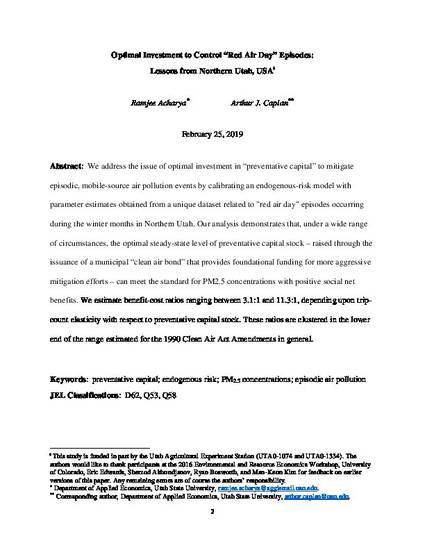
Unpublished Paper
Optimal Investment to Control "Red Air Day" Episodes: Lessons from Northern Utah, USA
(2019)
Abstract
We address the issue of optimal investment in “preventative capital” to mitigate episodic, mobile-source air pollution events by calibrating an endogenous-risk model with parameter estimates obtained from a unique dataset related to "red air day" episodes occurring during the winter months in Northern Utah. Our analysis demonstrates that, under a wide range of circumstances, the optimal steady-state level of preventative capital stock – raised through the issuance of a municipal “clean air bond” that provides foundational funding for more aggressive mitigation efforts – can meet the standard for PM2.5 concentrations with positive social net benefits. We estimate benefit-cost ratios ranging between 3.1:1 and 11.3:1, depending upon trip-count elasticity with respect to preventative capital stock. These ratios are clustered in the lower end of the range estimated for the 1990 Clean Air Act Amendments in general.
Keywords
- preventative capital; endogenous risk; PM2.5 concentrations; episodic air pollution
Disciplines
Publication Date
2019
Citation Information
Ramjee Acharya and Arthur Caplan. "Optimal Investment to Control "Red Air Day" Episodes: Lessons from Northern Utah, USA" (2019) Available at: http://works.bepress.com/arthur_caplan/128/
